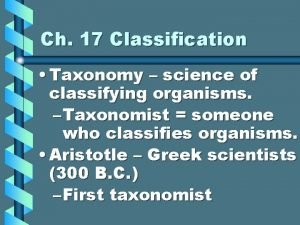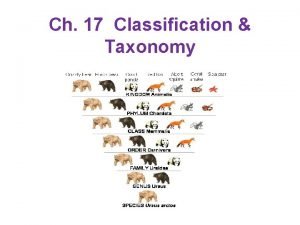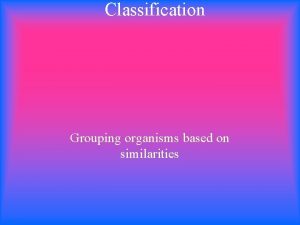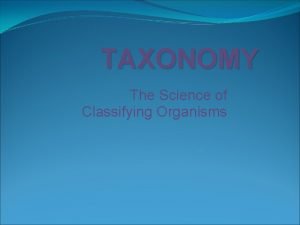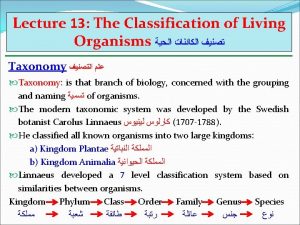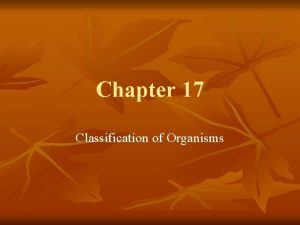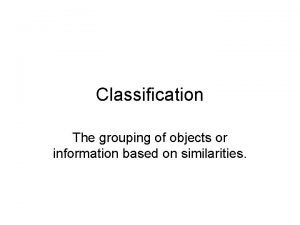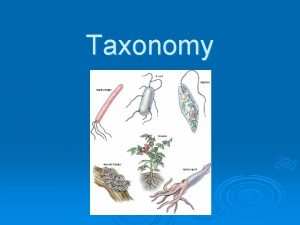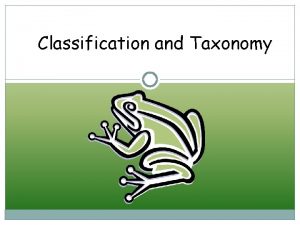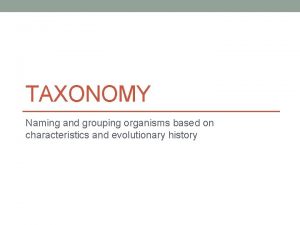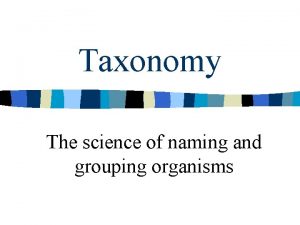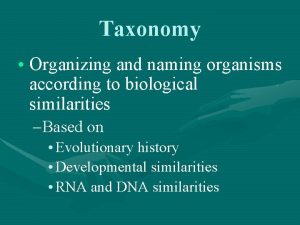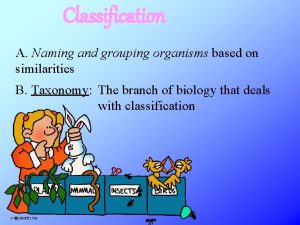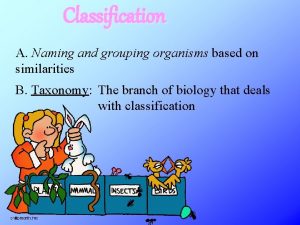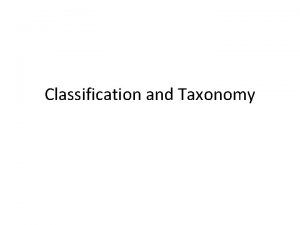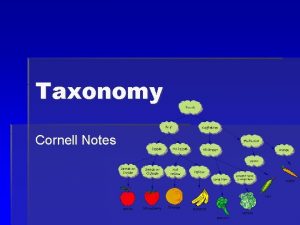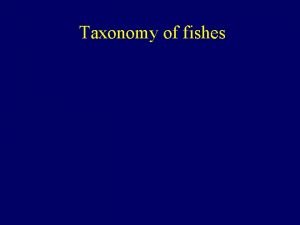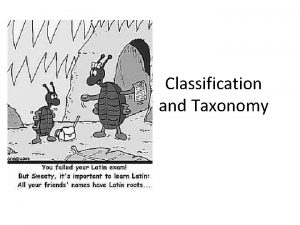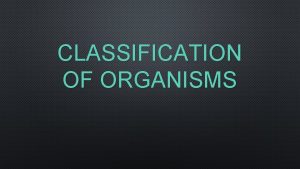Classification Notes Taxonomy Naming and grouping organisms according























- Slides: 23

Classification Notes

Taxonomy • Naming and grouping organisms according to their characteristics and evolutionary history.

Aristotle • Greek philosopher who first attempted to classify living organisms • Over 2000 years ago

Aristotle • He classified living things into two groups: – Plants – Animals

Aristotle • Why did his system create problems? – Not all living things are plants and animals – Even plants and animals are very diverse – Our knowledge of life has changed

Carolus Linnaeus • Swedish scientist who developed our modern system of classification. • 1707 - 1778

Carolus Linnaeus • Used morphology (form and structure) to categorize organisms

Carolus Linnaeus • Developed a hierarchy of levels in his system – Kingdom – Phylum – Class – Order – Family – Genus – Species King Phillip Came Over For Good Soup

Species • Remember that a species is a group of organisms that can mate and reproduce fertile offspring • Not a clear cut definition

Common Names • Most people use common names for organisms • This causes problems – 13 lined ground squirrels are often called gophers

Scientific Names • Scientific names solve the naming problem • Latin is used for most scientific names.

Binomial Nomenclature All organisms are given a genus and a species name. This way all people can use the same name to identify organisms

Genus and Species • The genus name comes first and begins with a capital letter. – Ex. Felis (it can be abbreviated as F. • The species names comes second and begins with a lower case letter. – Ex. domesticus *Both the genus and species names are usually italicized and often underlined. Ex. Felis domesticus

How do we classify organisms today? • Not so much on physical similarities (can be based too much on opinions). • Scientific evidence is a better way to do this.

Evidence for Classification • • • Chromosome Structure Biochemical Similarities Embryology DNA Sequencing Reproduction

Systems of Classification • Linnaeus used 2 Kingdoms – Plant – Animal

Modern Kingdoms • • • Animalia Plantae Fungi Protista Archaebacteria Eubacteria

Animalia • Multicellular heterotrophs

Plantae • Multicellular autotrophs

Fungi • Most are multicellular • Yeast is unicellular • Absorb food through cell walls

Archaebacteria • Unicellular prokaryotes • Related to first life forms • Live in harsh environments

Eubacteria • Unicellular prokaryotes • Includes most bacteria

Classification of a human • • Kingdom = Animalia Phylum = Chordata Class = Mammalia Order = Primate Family = Hominid Genus = Homo Species = sapien
 Hierarchy of classification
Hierarchy of classification Organisms taxonomy
Organisms taxonomy Taxonomic hierarchy of cat
Taxonomic hierarchy of cat Discipline of classifying and naming organisms
Discipline of classifying and naming organisms Discipline of classifying and naming organisms
Discipline of classifying and naming organisms Canis latrans classification
Canis latrans classification Class order family genus species
Class order family genus species Discipline of classifying and naming organisms
Discipline of classifying and naming organisms Classification groups in order
Classification groups in order Marzano taxonomy chart
Marzano taxonomy chart Unicellular vs multicellular
Unicellular vs multicellular The grouping of organisms based on similarities.
The grouping of organisms based on similarities. Process of grouping things based on their similarities
Process of grouping things based on their similarities Organisms taxonomy
Organisms taxonomy Order of classification of organisms
Order of classification of organisms Organisms taxonomy
Organisms taxonomy Biology
Biology Member of the same species
Member of the same species Concept 2 notes naming ionic compounds
Concept 2 notes naming ionic compounds Biodiversity examples
Biodiversity examples Animals dichotomous key
Animals dichotomous key Grouping of objects based on similarities
Grouping of objects based on similarities Grouping of objects or information based on similarities
Grouping of objects or information based on similarities What are the rules for writing scientific names
What are the rules for writing scientific names







